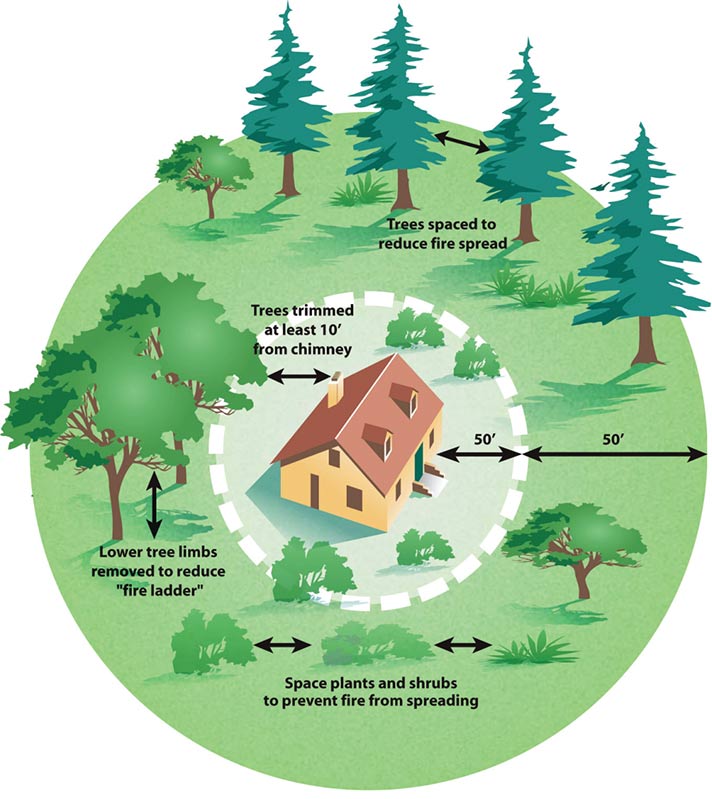Landscaping Against Your Home—An easy way to create defensible space around your home is to remove weeds, brush, and other invasive vegetation and debris. Use noncombustible rock mulch around your home in place of standard mulch. Trim grass and flowers to 4” or less and maintain all summer. Trim touching or overhanging tree branches to at least 10 feet from your home. Be sure to move any firewood or other combustible material away from your home, garage, and deck/patio/balcony. Firewood and other combustibles should be stored farther from the house.
Vents/Eaves & Mesh Screening—Vents and eaves are vulnerable spots, as they create a space for embers to gather and ignite combustible material. Eaves can be enclosed to make it more difficult for embers to gather, preferably boxing them in with noncombustible or ignition-resistant material. If you don’t have access to the materials to do this right now, clear the area of any debris.
Your Evacuation Plan—Evacuating sooner gives you the best chance of surviving a wildland fire and helps keep the roads clear for firefighters. Take time to create an evacuation plan and pack Go-Bags for your family and pets. Identify at least two ways out of your neighborhood and a safe place to go. Mark your potential evacuation routes clearly on a map and then practice them with your family. Make sure everyone in the family knows your safe meeting place, then let your friends and family know your plans. For Go-Bags, include water, food, any necessary medications, a change of clothes, spare chargers, and an extra set of credit cards, cash, or checks.
If you have pets, practice evacuating with them, and pack their food in your Go-Bags and include medications. Ensure you have a plan in place for outdoor animals or livestock.
Clearing Gutters/Roof Of Debris—Roofs and gutters are particularly vulnerable surfaces, as embers can lodge there and start a fire. Regularly clearing your roof and gutters of debris, installing gutter guards or screens, and blocking off any points of entry on your roof will all help harden your home. Replace or repair loose or missing shingles or tiles. Shake and wood shingles are very flammable. Class A fire-rated roof coverings (such as composition shingles, metal, or tile) should be used whenever possible.
Decks/Patios/Balconies—Decks, patios, and balconies are vulnerable spots. Embers can collect on, against, or under these spaces and start a fire that spreads to the home through walls, windows, or doors. Regularly clearing the area of debris helps harden your home, like clearing your roof and gutters. Take this time to remove any combustible items from underneath your deck or on your patio or balcony and avoid storing combustibles in this area. During fire season, remove baskets, flower arrangements, and other items that are likely to ignite.
Fencing—Fences, once ignited, offer a direct line for fire to spread to your home. If you have not used noncombustible fencing at least for the first five feet from where the fence touches the structure, consider doing so. Debris at the base of a fence can easily ignite from embers. Take this time to clear the base of your fence, on both sides.

Wayne are you related to Ralph Painter, former police chief Rainier OR?